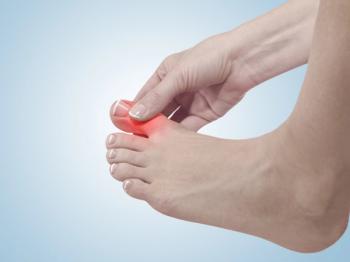
Daunorubicin May Produce, Contribute to Long-Term Remission, Survival in Patients with Newly Diagnosed High-Risk/Secondary AML
Daunorubicin and cytarabine liposome for injection is a dual-drug liposomal encapsulation of cytarabine and daunorubicin approved by the FDA and EMA for the treatment of adults with newly diagnosed therapy-related AML or AML with myelodysplasia-related changes.
After a 5-year follow-up, improved overall survival (OS) was maintained in a phase 3 study of daunorubicin and cytarabine liposome for injection (CPX-351, Vyxeos), supporting evidence that the therapy has the ability to produce or contribute to long-term remission and survival in older patients with newly diagnosed high-risk/secondary acute myeloid leukemia (AML), according to a poster at the 2020 ASCO Virtual Scientific Program.
Daunorubicin and cytarabine liposome for injection is a dual-drug liposomal encapsulation of cytarabine and daunorubicin approved by the FDA and EMA for the treatment of adults with newly diagnosed therapy-related AML or AML with myelodysplasia-related changes.
The phase 3 study, NCT01696084, evaluated patients aged 60-75 years with newly diagnosed high-risk/secondary AML and found that daunorubicin and cytarabine liposome for injection significant improved median OS versus conventional 7+3 with a comparable safety profile.
Patients were randomized 1:1 to receive ≤2 induction cycles of daunorubicin and cytarabine liposome for injection as a 90-minute infusion on Days 1, 3, 5 or 7+3. Further, patients who achieved complete remission (CR) or CR with incomplete platelet or neutrophil recovery could receive up to 2 consolidation cycles. Patients could receive a hematopoietic cell transplant (HCT) at the physician’s discretion, and patients were followed until death or up to 5 years following randomization.
Three hundred and nine patients were randomized to daunorubicin and cytarabine liposome for injection or 7+3, and the survival rate at 5 years was higher for daunorubicin and cytarabine liposome for injection versus 7+3.
The most common primary cause of death was progressive leukemia in both arms, among the studied patients who died. After a median follow-up of 60.65 months, improved median OS with daunorubicin and cytarabine liposome for injection versus 7+3 was maintained.
HCT was received by 35% and 25% of patients after daunorubicin and cytarabine liposome for injection versus 7+3. Among these patients, the survival rate at 5 years was higher for daunorubicin and cytarabine liposome for injection versus 7+3 and median OS landmarked from the HCT date was not reached for daunorubicin and cytarabine liposome for injection versus 10.25 months for 7+3.
REFERENCE
Lancet JF, Uy GL, Newell LF, et al. Five-year final results of a phase III study of CPX-351 versus 7+3 in older adults with newly diagnosed high-risk/secondary AML. Poster presented at: 2020 ASCO Virtual Scientific Program; May 29-31, 2020; Tampa, FL. Accessed June 2, 2020. Doi: 10.1200/JCO.2020.38.15_suppl.7510.
Newsletter
Stay informed on drug updates, treatment guidelines, and pharmacy practice trends—subscribe to Pharmacy Times for weekly clinical insights.






































































































































































































